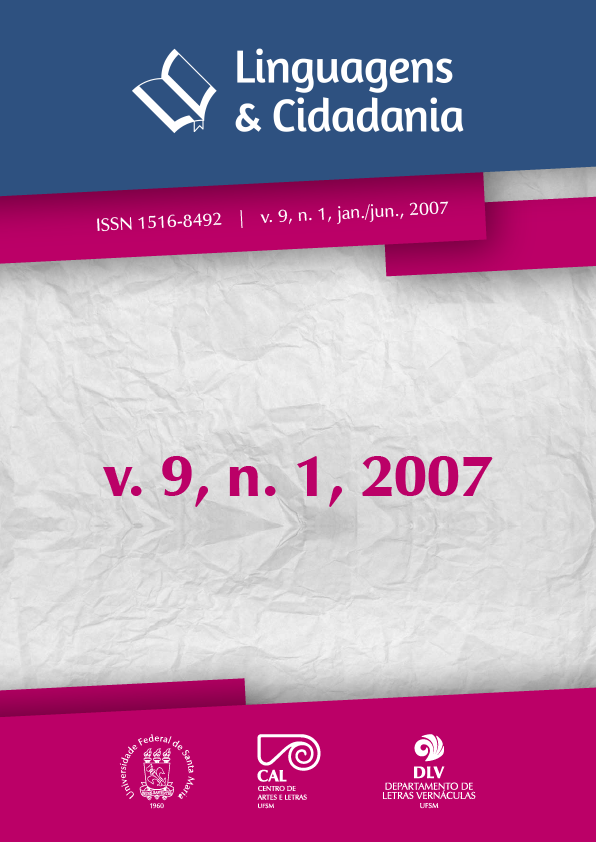A diversidade linguística no contexto escolar
DOI:
https://doi.org/10.5902/1516849228299Parole chiave:
Diversidade linguística, Contexto escolarAbstract
This article is a result of a developing project by Universidade de Cruz Alta. The methodology used consists of reading and application of questionnaires and interviews with students of primary and high schools from Panambi. The previous outcomes suggest that the reason of some discrimination in the classroom is due to the student’s speaking way and some teachers don’t realize yet the enormous linguistic diversity in our country. In this sense, many traditional teachers discriminate their students because according to them, the pupils don’t know the Portuguese language. In fact these professionals don’t notice the linguistic diversity of Brazil.Downloads
Riferimenti bibliografici
BAGNO, Marcos. Preconceito lingüístico o que é, como se faz. São Paulo, Brasil, Loyola 1999.
CAGLIARI, Luiz Carlos. Alfabetização e lingüística. São Paulo: Pontes, 1992.
CAMACHO, Roberto Gomes. A variação lingüística. Subsídios à proposta Curricular de Língua Portuguesa para o 1º e 2º grau. São Paulo, SE/CENP/UNICAMP, pág 29-41, 1988.
MOITA LOPES, Luiz Paulo da Moita. Oficina de Lingüística Aplicada. Campinas, SP. Mercado de Letras, 1996.
LUFT, Celso Pedro. Língua e Liberdade: por uma nova concepção da língua materna e seu ensino. Porto Alegre. L&PM, 1985.
PRETI, Dino. Sociolingüística: os níveis da fala – um estudo sociolingüístico do diálogo na literatura brasileira. 4 ed. rev. e modificada, com a reelaboração de vários capítulos. São Paulo. Nacional, 1982.
SAMBAQUY-WALLNER, Virgínia. A língua alemã em São José do HortêncioRS. Caxias do Sul: Educs, 1998.
SIGNORINI, Inês. Língua(gem) e identidade: elementos para uma discussão no campo aplicado. Campinas, SP. Mercado de Letras, 2002.
SOARES, Magda. Linguagem e escola: uma perspectiva social. São Paulo, Ática, 1980.






